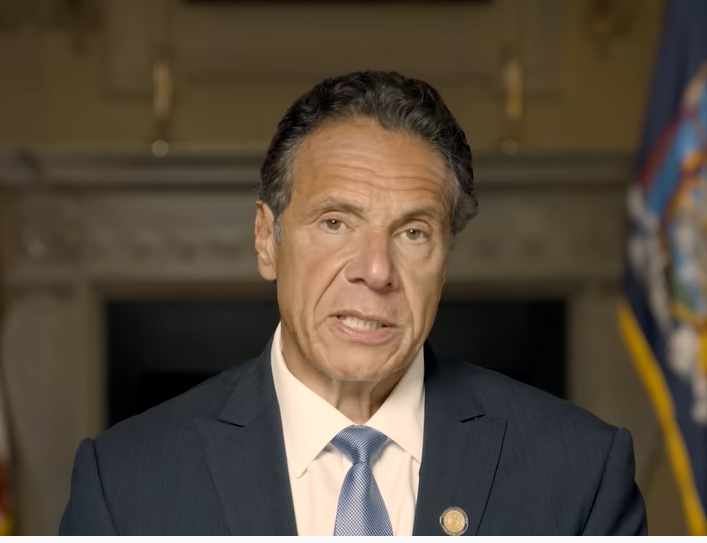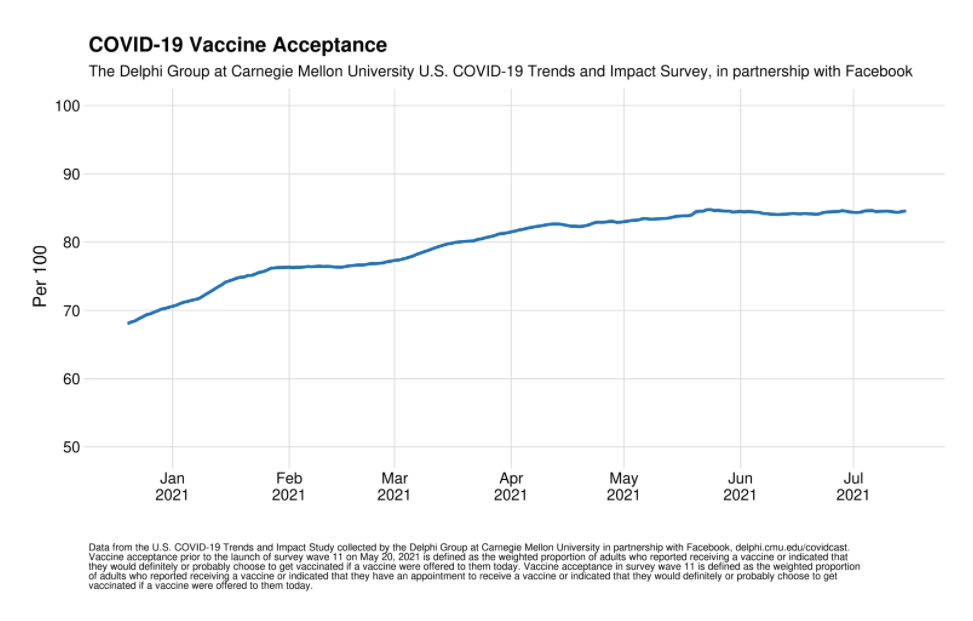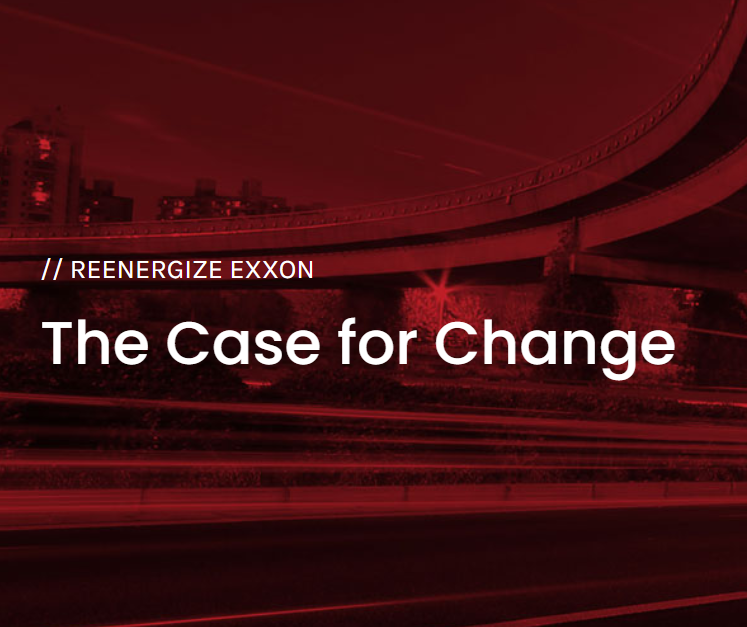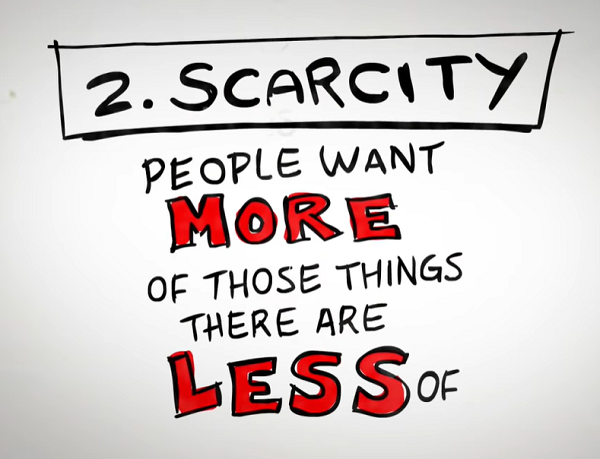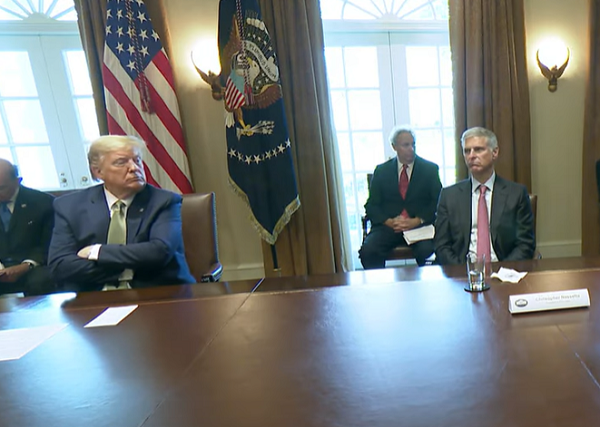New "Jeopardy!" Host Resigns
Just nine days after he got the job, Mike Richards resigned as the new host of ”Jeopardy!“ The Anti-Defamation League revealed comments that the host made on a podcast, “The Randumb Show,” between 2013 and 2014.
Although Richards was selected as a host without too much personality to overshadow the show, his reputation is now tarnished by these remarks.
What surprises me is that the show producers didn’t uncover the comments themselves. Or did they find them benign? Did they also discount litigation against him when he was a producer for “The Price Is Right” and “Let’s Make a Deal”?
Regardless, this is yet another warning to students and others to consider carefully what they say and post online; everything becomes a permanent digital record.
Below is Richards’ email to “Jeopardy!” staff about the previous litigation, including a version of the now-classic, “This is not who I am.” Below the email is his apology about the podcast comments, including versions of the old classics, “I’m a father” and “It was a joke.”
Team Jeopardy!
Recently, Jeopardy!, our host search and the possibility of me hosting has been all over the news. I want to take a moment so that you can hear directly from me. The last year has been the most challenging in the history of the show. I know we are all still dealing with the loss of our hero, Alex, while at the same time continuing to produce amazing shows for our millions of fans through the pandemic. Our success over that time with our guest-host rotation, including the more than $3 million we raised for charities, is a singular achievement and a testament to your talent and dedication. I’ve produced a lot of television over the years, and I could not be more impressed with team Jeopardy!
It is true that I was asked if I would consider hosting the show. I was humbled and deeply honored. No final decisions have been made and discussions with me and other potential hosts are still ongoing. I know I have mentioned this to you all before, but the choice on this is not my decision and never has been. Throughout this search, Sony’s top priority has always been to continue the incredible legacy you and Alex built. As you know, Alex always believed the game itself and the contestants are the most important aspects of the show, and that will continue to be the guiding principle as the decision is finalized.
I want to address the complicated employment issues raised in the press during my time at The Price is Right ten years ago. These were allegations made in employment disputes against the show. I want you all to know that the way in which my comments and actions have been characterized in these complaints does not reflect the reality of who I am or how we worked together on The Price is Right. I know firsthand how special it is to be a parent. It is the most important thing in the world to me. I would not say anything to disrespect anyone’s pregnancy and have always supported my colleagues on their parenting journeys.
I am very proud of my time on The Price Is Right and Let’s Make a Deal. During my tenure, our female cast members welcomed seven beautiful children. We embraced and celebrated each pregnancy and birth both in front of and behind the camera. It was a joy to watch their families grow and highlight their happiness as part of the show.
For us, I realize there is a lot going on right now as we ramp up for the new season. Please do not hesitate to reach out of you have any questions or concerns.
It is truly an honor to get to work with all of you to produce this amazing show, and I look forward to the days ahead as we get back into production.
Mike
"It is humbling to confront a terribly embarrassing moment of misjudgment, thoughtlessness, and insensitivity from nearly a decade ago. Looking back now, there is no excuse, of course, for the comments I made on this podcast and I am deeply sorry," Richards said in a statement to the Ringer. "The podcast was intended to be a series of irreverent conversations between longtime friends who had a history of joking around. Even with the passage of time, it's more than clear that my attempts to be funny and provocative were not acceptable, and I have removed the episodes. My responsibilities today as a father, husband, and a public personality who speaks to many people through my role on television means I have substantial and serious obligations as a role model, and I intend to live up to them."
Apple Clarifies Policy
Apple software chief Craig Federighi spoke with a Wall Street Journal reporter about a misunderstood policy related to child pornography. The company had announced new reporting guidelines for illegal content. As part of the same message, they described new guidelines about photos sent to and from children. User backlash concerned how the company was monitoring their phones.
Federighi said, “I do believe the soundbite that got out early was, ‘Oh my God, Apple is scanning my phone for images.’ This is not what is happening.” He clarified that, using algorithms, they’re looking at photos stored on iCloud—not on people’s phones. The company is flagging only those photos that meet criteria of child pornography.
During the published interview with the WSJ reporter (what made the final cut on the website), Federighi didn’t emphasize the end goal: protecting children. The reporter provided this context, but the message was not at the forefront’s of Federighi’s main points. His focus was on clarifying the initial message: “I think our customers own their phones,” again, distinguishing what we choose to post on Apple’s server.
Federighi also demonstrated humility by admitting that the message was garbled and that AI technology does make mistakes. In hindsight, it sounds as though Federighi would have announced these guidelines in separate messages with more detail about the photo search process.
Report Details Governor Cuomo's Pattern of Sexual Harassment
The New York State attorney general published a 165-page report detailing how Governor Andrew Cuomo has sexually harassed women for years and how a culture of “fear and intimidation” allowed his behavior to continue.
In addition to the report, other communications about the situation are interesting examples, particularly of persuasion:
Governor Cuomo’s video response
NY Times opinion calling for his resignation
What makes each of these messages credible—or not—is a rich topic of discussion. The report and other messages use details and examples to prove their points. In his video message, the governor intersperses images of him hugging and kissing many people. His strategy is to “normalize” and de-sexualize his behavior. However, the report describes incidents that go beyond these displays and concludes that the governor violated federal and New York State sexual harassment law.
Update: Governor Cuomo resigns. In a video, he explains his decision, which seemed inevitable.
Facebook Responds to President Biden's Criticism
Facebook is on the defensive after President Biden said the company is “killing people.” The president blamed Facebook for not managing misinformation about the COVID-19 vaccine and, as a result, causing more deaths: “Look, the only pandemic we have is among the unvaccinated. And they’re killing people.”
President Biden later softened his message, saying that information from about a dozen people is wrongly influencing people’s decisions: “Facebook isn’t killing people; these 12 people are out there giving misinformation. Anyone listening to it is getting hurt by it. It’s killing people. It’s bad information.”
In response, Facebook published a statement on its website, “Moving Past the Finger Pointing.” The writer, Guy Rosen, VP of Integrity, offers several points of evidence. He mentions partnerships with universities, the high vaccination rate among Facebook users (85%), and measures the company has taken, including promoting “authoritative information” and labeling “debunked” content.
Rosen disputes what is perhaps President Biden’s implied claim: that Facebook is the reason he missed his goal of having 70% of Americans vaccinated by July 4.
A New York Times Daily podcast analyzes the arguments and finds strengths and weaknesses on both sides. The reasons people don’t get vaccinated are complicated. At the same time, the reporter concludes, Facebook could do more to prevent the spread of misinformation.
This story is a good example of persuasion—and politics and business.
Persuading Wall Street
The Wall Street Journal describes a hedge-fund manager’s decision to convince Wall Street investors to improve Exxon’s board oversight. A former coal mine owner, Christopher James spent $250 of personal funds to rally support from other fund managers and win three board seats to encourage environmental, social, and governance (ESG) changes at the company.
Exxon was vulnerable, and the timing was right. James created an organization, Engine, which wrote an open letter to Exxon and shareholders. The demands include “putting the Company on a path to net zero total emissions by 2050.”
James says his inspiration came from a conversation with his children:
The hedge-fund manager’s school-aged sons asked him how he could consider himself an environmentalist if he invested in energy companies, and Mr. James said he struggled with his explanation.
“As I was listening to myself talk, I thought `I am really splitting hairs on this.’” One of his sons, he said, “had this look on his face where his forehead wrinkled. He didn’t buy it.”
James also said, “I can get rid of this compartmentalization. I could realign my values with an investment thesis.”
This story is a great example of integrity and courage character dimensions. James is living his values and took action despite risks.
Waitlisted Student Markets Himself
George Joseph White V was waitlisted from Cornell’s Dyson School, and he decided to promote himself. He advertised on the outside of a local bus with a photo of himself and his website. On his website, georgecantwait.com, White lists his hobbies, interests, and other information. He also includes quotes from a few of his teachers.
The approach certainly is creative and gutsy, but is it appropriate? From a business communication perspective, we consider the audience and the message. White describes his qualifications, but he doesn’t say much about how could contribute. What would he bring to the school that might differentiate him from other students on the waitlist?
White also is interviewed by a local radio station, which is posted on his website. He says he believes he’s qualified, and the only reason he wasn’t accepted is that the number of applicants increased. The number did increase, partly because of the pandemic and students taking a gap year and partly because Cornell dropped the SAT/ACT requirement.
Still, perhaps other students were simply more qualified than White, and that’s why he didn’t get in. White also chose an approach that isn’t available to all students: spending money on ads and a website.
When I asked students about the situation in class, they were mixed. Some respected his perseverance, while others thought his approach was too self-promotional and unfair. As one student wrote in chat, “It’s a WAIT list.”
Amazon’s Statement About the Failed Union Attempt
Employees at Amazon’s Bessemer, Alabama, warehouse voted against forming a union. Of 5,876 employees, 1,798 voted against and 783 for the union—not enough. The New York Times presents a simple, clear graphic of the vote.
Critics say that Amazon used aggressive tactics to deter workers from favoring the union. For example, union organizers approached employees at a traffic light, which the city changed based on a request from Amazon management. The change led to longer green lights and shorter red lights based on traffic. Before the vote, the National Labor Relations Board (NLRB) determined that two employees were fired illegally for their union-organizing activity.
In messages to employees, the company used a slogan, “Do it without dues,” meaning employees should negotiate with their managers and not through a union, which charges fees. The slogan was also the URL for a website, which has since been removed.
Amazon posted a statement about the win. The company denies intimidation charges and reinforces its $15 wage and starting benefits. Although the statement indicates that 16% of employees at the facility voted for the union, a higher percentage of those who voted were favorable towards the union.
Royal Family Responds to Racism Allegations
In an interview with Oprah, Prince Harry and Meghan Markle accused the British royal family of racism, and the fallout is severe. Markle talked about having suicidal thoughts and how she had been treated by the family, including plans for the couple’s baby. She said he wouldn’t have a title or security, and that the family had “concerns and conversations about how dark his skin might be when he was born.”
Prince Harry said that he a discussion with his grandmother and two with his father about the couple’s concerns until his father “stopped taking my calls.”
Victoria Murphy, a writer for Town & Country magazine, describes the family’s reaction:
So far, the royal family has remained tight-lipped. There have been no statements and, it seems, very little guidance offered. Perhaps they are retreating into a default “no comment” stance, or perhaps they are sensibly waiting to see what sticks before deciding whether to add fuel to the fire. In this war of words, there is a sense that we could go on and on.
Buckingham Palace did release a short statement, and the Queen took some time before signing off:
The whole family is saddened to learn the full extent of how challenging the last few years have been for Harry and Meghan.
The issues raised, particularly that of race, are concerning. While some recollections may vary, they are taken very seriously and will be addressed by the family privately.
Harry, Meghan and Archie will always be much loved family members.
Of course, the issue is that the royal family is a public organization, with several public figures, whether they wish to be or not.
Two days later, Prince William gave an interview and said, “We’re very much not a racist family.”
Murphy sums up the situation: “Make no mistake, this is an interview that will go down in history as having rocked the British royal family to its core.”
Governor Cuomo Address Sexual Harassment Allegations
In a video statement, Governor Andrew Cuomo addressed sexual harassment allegations made by three women. He begins well, explaining his decision to speak directly to the public on the topic, although lawyers advised him to wait. To preserve his image, this is a good call: research shows that his apology is unlikely to negatively affect lawsuit outcomes—and may even have a positive effect.
But his apology goes awry. He uses language that is classic in non-apologies, for example, “It was not my intention” and “I certainly never meant to….” In sexual harassment law, intent does not matter—only the impact. Further, this type of language typically doesn’t land well. People don’t care. Instead, he should focus on the impact on these women and perhaps on the office.
He also says, “I now understand that I acted in a way that made people feel uncomfortable.” This is problematic because first, as he says at the beginning, he is a lawyer. As a lawyer and as a political leader, he should know better. Such language is reminiscent of “I’m sorry if you were offended,” implying that it’s the receiver’s problem. A couple of days earlier, after the second allegation, the governor said, “To the extent anyone felt that way, I am truly sorry about that.”
To his credit, he says, “I apologize” and “I’m sorry,” which people do want to hear in these types of statements.
We will see what results from these allegations, in the midst of calls for his resignation. Governor Cuomo also is embroiled in charges that he lied about the number of Covid deaths in nursing homes. So far, he says that he will not resign.
McKinsey Pays Settlement for Work with Purdue Pharma
Management consulting company McKinsey will pay almost $600 million to settle several lawsuits over its role in the opioid crisis, including offering marketing advice to Purdue Pharma. The largest settlement is for $573 million, which Massachusetts Attorney General Maura Healey describes in a video.
Healey’s presentation and delivery are interesting because she represents families and is speaking for 47 attorneys general in several U.S. states. Her anger is evident, but her audience is small: only 53 views one week after it’s posted, and at least three of those are me. What are the communication objectives? This will make a good class discussion.
McKinsey’s response is also interesting for students studying business communication and character. In an email to staff, Global Managing Partner Kevin Sneader describes “setting a higher standard.” Whereas the governors consider McKinsey’s actions unlawful, Sneader does not agree:
“Indeed, while our past work with opioid manufacturers was lawful and never intended to do harm, we have always held ourselves to a higher bar. We fell short of that bar. We did not adequately acknowledge the epidemic unfolding in our communities or the terrible impact of opioid misuse and addiction, and for that I am deeply sorry.”
The Massachusetts court filing explains the legal argument.
At some point in 2019, two McKinsey executives debated in emails “eliminating all our documents and emails.” These executives have been terminated. (See McKinsey communications.)
Fauci: "Numbers Don't Lie"
Dr. Anthony Fauci, the lead infectious disease expert in the U.S., was asked whether the nation has the worst COVID outbreak, and he said, “Numbers don’t lie.”
CNN’s Dr. Sanjay Gupta interviewed the doctor at a Harvard School of Public Health forum. Dr. Gupta asked, “We're not quite 5% of the world's population, yet represent 20-25% of the world's infections ... I mean, that has to be the worst. Is it not the worst?"
Dr. Fauci responded, “Yeah, it is quantitatively if you look at it, it is. I mean the numbers don't lie.”
The doctors are looking at infections per capita. Of course, we could look at other measures. In this interview, President Trump considers the number of deaths as a percentage of those infected.
Discussion:
Do numbers lie? Can they? What about this book: How to Lie with Statistics?
Find evidence to both support and dispute the claim that the U.S. is the “worst.” What measures can you find? Which do you find more meaningful?
COVID-19 Crisis Communication for Reopening the U.S.
What comes after we “flatten the curve” of COVID cases? New York Times opinion writer Charlie Warzel warns that, without a clear communication strategy for what’s next, people will distrust leaders.
Warzel cites six communication guidelines from the report of a working group at The University of Minnesota, The Center for Infectious Disease Research and Policy (CIDRP).:
Don’t Over Reassure.
Proclaim Uncertainty
Validate Emotions—Your Audience’s and Your Own
Give People Things to Do
Admit and Apologize for Errors
Share Dilemma
Discussion:
How should U.S. officials communicate now? What do they need to accomplish, and how well are our current leaders meeting the challenge? In other words, do you agree with Warzel that our leaders are falling short?
Read the entire report. What other principles does the group recommend?
Analyze the report: the audiences, objectives, writing style, organization, and so on. What are the strengths, and how could it be improved?
Airlines CEOs Criticize Boeing CEO's Prediction
During an interview on the “Today” show, Savannah Guthrie asked Boeing CEO David Calhoun whether a major U.S. airline might not survive because of the pandemic. Calhoun said, “Well, I don’t want to get too predictive on that subject, but yes, most likely. Something will happen when September comes around.” He also said that “we believe we will return to a growth rate similar to the past, but it might take us three, five years to get there.”
The response angered major airline executives, who are currently negotiating for federal assistance.
Another Boeing executive defended Calhoun’s statement:
“Some weren’t keen on his sobering assessment of industry challenges ahead, but others appreciated him telling it like it is. It’s in his nature to be frank.”
Discussion:
What’s your view of Calhoun’s comment? One view is that, during a global pandemic, executives might need to be particularly sensitive. Another view is that this is a time for honest, direct talk.
What are the potential implications of his comment? Should he have avoided it?
What the entire interview. How did Calhoun do overall? What are his communication objectives and key messages?
United Airlines Message
The COVID-19 messages keep coming from airlines and other companies. Here’s one from United Airlines, encouraging us to fly by offering flexibility and promising cleanliness.
Dear Amy,
As we all adjust to this new normal, my thoughts are with you and your families and I hope you're staying safe and healthy. The last several weeks have been emotional and trying for all of us, but I continue to be inspired by the goodness in people and the genuine acts of kindness, large and small, that I see every day. These gestures of warmth, strength and caring give me the confidence that in time, we will emerge more United Together than ever before.
It's in that spirit that I wanted to share with you some good news about what the 100,000 family members of United Airlines have been doing for you as we tackle the biggest and most disruptive crisis we've faced in our 94‑year history.
Good news as you're making travel plans
Life is unpredictable in lots of ways right now. We know many of you started the year planning to fly with us to visit family, go to a game or concert, attend a trade show or just get away. And you might be feeling anxious about what to do about your upcoming travel plans. That's why we've waived the fees to change or cancel any trip with us through the end of 2020, including travel that was already planned as well as trips that you're hoping to take in the future. Every customer now has until May 31 to make changes to current reservations or book new flights that can be changed or canceled without a fee, and you'll be able to reschedule your trip for anytime in the next 12 months. So take the next few weeks and do what's best for you, your family and your work.
Good news for when you choose to fly
Safety has always been our top priority, and because of that, the social distancing and cleaning procedures that have become a way of life for all of us are now staples of the way we run our airline. When you're ready to fly, you'll see that a lot has changed at the airport and on board our aircraft. We're boarding fewer customers at a time and starting from the back of the plane to avoid crowding in the gate area, on the jet bridge and in the aisle. We're automatically blocking middle seats to give you enough space on board, requiring all our employees on board, including our flight attendants, to wear masks and, in early May, making masks available to our customers. Of course, these measures are in addition to our state‑of‑the‑art sanitization procedures like cleaning our aircraft with electrostatic sprayers, and extra precautions like taking our employees' temperatures before they start work to protect the well‑being of our customers and colleagues. Find a complete overview of what's changed at United to adapt to this new normal.
Good news for our communities
While we wait to welcome you back, we've been using our time and resources to do our part and support those on the frontlines of this crisis as well as the millions of families who have been affected by the most dramatic disruption of the labor market since the Great Depression. Leveraging the full power of our airline to do the right thing, we've flown more than 1,000 medical volunteers for free; donated 170,000 pounds of food; and used our fleet to get close to 20,000 stranded people home and medical supplies to the places that need them most. Here are just a few examples of how we're contributing in the fight against COVID‑19:
I'll end where I started: I hope you and your family continue to be well. This crisis has revealed a great deal about who we are as people and I'm moved by your continued resilience and resolve. We look forward to welcoming you the next time you take to the friendly skies.
Stay safe and be well,
Toby Enqvist
Chief Customer Officer
United Airlines
Discussion:
What principles of business communication does the United message follow? What could be improved?
How does this message compare to others you received recently?
After reading the Morning Consult report about messaging during COVID-19, what recommendations would you make to United?
Similar COVID-19 Ads
Are all COVID-19 ads the same? A digital marketer compiled excerpts from recent ads showing similar images, music, and phrases. He titled his video, “Every Covid-19 Commercial Is Exactly the Same.”
Sean Haney describes why so many ads are the same:
What's the deal? In reality, many companies have found themselves short on cash, almost overnight. They needed to get a message out - and quick. They asked their teams to throw something together. Since they can't film a new ad because of social distancing, they compiled old stock b-roll footage and found the most inoffensive royalty-free piano track they could find. This, combined with a decade of marketing trends dictated by focus groups and design-by-committee, released a tsunami of derivative, cliche ads all within a week of one another. It's not a conspiracy - but perhaps a sign that it's time for something new.
A Morning Consult report offers guidance for companies. From 2,200 Americans at the end of March, we learn how companies should communicate. For example, people say they are more likely to purchase from a company that provides “a public statement about support being given to laid-off employees” compared to other types of statements.
Discussion:
What’s your view of these company ads? How do you react when you see them? Do you react differently to different companies’ ads?
Read the report. Analyze the audience, objectives, tone, organization, visuals, and so on. What principles of business communication are followed?
What else do you learn from the report about how companies should communicate during COVID-19?
Does Persuasion by Scarcity Work?
Business communication students may learn about Robert Cialdini’s Six Principles of Persuasion, including scarcity. For example, a online retailer indicates “Only two left!” or “Only one left at this price!”
In a Wall Street Journal article, a researcher questions whether the “quantity scarcity” strategy works under all conditions. Dr. Christopher Tang explains new research:
“…scarcity messages work best with time-sensitive and perishable products such as hotel rooms or plane tickets, as well as unique items like collectibles or limited editions.
“They are less effective with durable goods such as home-improvement products or kitchenware, in part because they can give shoppers the impression that the product is being pushed because it is undesirable, lower quality, obsolete or discontinued. And in the case of items typically bought in larger quantities, such as partyware, lightbulbs and batteries, we found that scarcity messages can actually hurt sales by making shoppers believe they won’t be able to buy as much of a product as they want.”
To use the scarcity principle effectively, Dr. Tang suggests that retailers highlight quality, promote urgency, and offer product bundles
Discussion:
When have you seen the quantity scarcity at work? Did it persuade you to purchase something?
Think of a specific product that you might buy. How would you recommend that retailers use this strategy effectively to move remaining products?
Tourism CEOs Meet with President Trump
President Trump invited CEOs of major tourism companies to discuss the COVID-19 response.
Hilton CEO Christopher Nassetta began by highlighting issues in the industry:
“Hilton’s been around 100 years -- we’ve never closed a hotel that wasn’t going to be demolished or rebuilding, The bulk of our hotels in the major cities are closing as we speak.”
Nassetta was also complimentary to President Trump and Vice President Pence and said that he wanted to protect employees. The president reassured him that they’ll be up and running soon, although both said the situation is currently a “disaster” “all over the world.”
Discussion:
How would you describe the purpose of this gathering? What are President Trump’s objectives?
Assess each of the CEOs during the meeting. How well did they represent their brand?
Singapore PM Lee Hsien Loong
Two students sent me Singapore Prime Minister Lee Hsien Loong’s news conference as a positive example. I can see why: he gives a model speech, balancing emotional appeal and straight talk. He is proud of Singapore’s response, and yet he is honest about the challenges ahead. The PM also gives examples from other countries and the lessons learned.
Discussion:
What are the strengths of the Prime Minister’s speech?
Assess his delivery skills.
How have leaders in other countries followed this example—or how have they fell short?
Which leadership character dimensions does the PM demonstrate in his speech?
Governor Cuomo's Press Conference
In his second news conference about Coronavirus, New York Governor Andrew Cuomo announced new cases, provided resources, and answered questions.
Discussion:
Assess the news conference. What does Governor Cuomo do well, and what suggestions would you have for him to improve his communication?
What strategies for answering questions does the Governor demonstrate?
Comparing Airlines Messages About COVID-19
Transportation companies would like to see more people travel, yet people are wary of COVID-19. Compare these emails to travelers:
Discussion:
Analyze the messages: audience, communication objectives, organization, writing style, etc.
In what ways are the messages similar and different? How might the travel mode—airline or bus—affect the communication choices?
Which messages are most and least effective and why?
What’s your view of the American Airlines video? How does the media choice affect the message?




